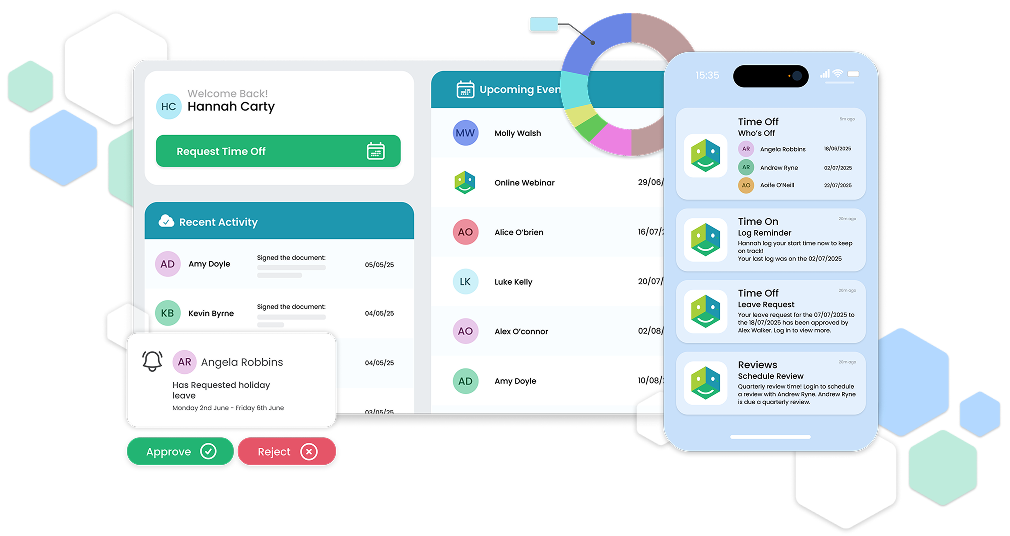What does CPD stand for? Is it just another name for training?
CPD Definition
According to CIPD, CPD stands for Continuing Professional Development. It refers to the process of tracking and documenting the skills, knowledge and experience that you gain both formally and informally as you work, beyond any initial training. It’s a record of what you experience, learn and then apply. The term is generally used to mean a physical folder or portfolio documenting your development as a professional.
Many professional associations strongly emphasise CPD and insist on a set number of hours to be completed yearly to keep your accreditations current.
Managing CPD is a great way to keep people’s skills current. This is essential for the changing world of work. People’s skills and expertise, if not kept up to date, can quickly become outdated, affecting the productivity of your workforce and eventually your bottom line.
Organisations can encourage and reward their employees by keeping them up to speed in their chosen subject or area. With CPD management solutions, it's easy to monitor, manage, and encourage such behaviour.

If CPD management software is enacted correctly, the onus can swing to the employee to ensure that their skills are kept up to speed in a changing workplace.
Many organisations now grant a number of CPD days to their employees on a yearly basis (like annual leave). This way, employees can develop their skills to become more proficient in their jobs. In some instances, this allows employees to prepare for new jobs in their own organisation where skill gaps appear.
How Does Training and Development (T&D) Differ from CPD?
Training and development (T&D) includes any activity that helps employees build new or improve existing knowledge or skills. Training focuses on improving performance in a current role through specific, often short-term, learning activities, while development takes a broader, long-term view to prepare employees for new responsibilities, roles, and career progression.
T&D tends to be more formal and instructed by the organisation. CPD can be more fluid. It's a commitment to ongoing lifelong learning that encourages employees to look forward and identify chances to learn something new, refresh existing knowledge, improve skills, or keep up-to-date with the latest developments within their profession or industry.
In practice, CPD includes everything from taking a training course or attending a seminar, to studying for new qualifications or learning new aspects of a job. It makes the process of learning more conscious and proactive, and involves keeping records of the increasing skills, knowledge and experience gained.
Training is one specific and common form of employee development. CPD combines different methods of learning, including training courses, seminars, workshops, conferences and events, webinars and online learning platforms. CPD can also include sharing best practices, thoughts, and ideas, all to help the employee improve within the work environment.
Anyone who is a member of a professional body is likely to have CPD requirements laid out for them by that body. In addition, people who work within a formally regulated sector, such as medicine, finance, or law, are likely to be required to track and progress their CPD so they can maintain their license to practice or professional qualifications.
If an organisation is expanding or growing, a formal CPD policy can be very effective in helping internal employees grow with the company.
Smart employers should allow employees to suggest a CPD plan with their manager. They should propose what they want to achieve, be it a new role in the company or a new skill set that will help the company attain its objectives and goals. Companies that go down this route and implement a strong organisational culture statistically retain more good people than those who don’t.
Maintaining CPD logs and costs is imperative to managing the effectiveness of the initiative. Such logs may be required by professional bodies so that your existing employees can maintain and enhance their professional accreditations going forward.

HRLocker has developed a module within our software specifically for these tasks.
Our CPD feature allows companies to manage and report on training certificates and events. However, with our self-service employee philosophy, we enable employees to suggest training and CPD items.
The CPD area also allows the execution of performance management systems and workflows for carrying out reviews. For example, reminder automation and document distributions for scheduling and completing one-on-ones.
This approach helps the employees manage their skill sets better. It also allows the company to better manage its own skills requirements and resourcing needs going forward.
We would encourage all progressive employers to implement a CPD policy and system and watch their employees flourish.









